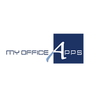Mastering production and achieving maximum efficiency are crucial goals for businesses in today's fast-paced and competitive landscape. To accomplish this, one must harness the power of Manufacturing Resource Planning (MRP). In this comprehensive guide, we will delve into the world of MRP and explore how it can revolutionize your production processes. So, join us on this journey as we uncover the secrets to mastering production with MRP.
What is Manufacturing Resource Planning (MRP)?
Manufacturing Resource Planning, or MRP, is a comprehensive system that helps businesses effectively plan and manage their production processes. It enables companies to streamline their operations, optimize resource allocation, and achieve maximum efficiency in manufacturing. With MRP, businesses can forecast demand, plan production schedules, manage inventory, and track resources, all in one centralized platform.
The Benefits of Implementing MRP
- Enhanced Production Planning: MRP enables businesses to accurately forecast demand, facilitating efficient production planning. By analyzing historical data, market trends, and customer orders, MRP helps you determine the required materials, resources, and timelines for each production run.
- Efficient Inventory Management: With MRP, you can optimize your inventory levels by ensuring that you have the right amount of raw materials, components, and finished goods at the right time. This helps prevent stockouts and reduces excess inventory, ultimately saving costs and improving cash flow.
- Resource Optimization: MRP allows you to effectively allocate your resources, including equipment, labor, and machinery. By eliminating bottlenecks and balancing workloads, you can increase productivity and reduce production lead times.
- Real-Time Data Visibility: MRP provides real-time visibility into your production processes. You can track the progress of each order, monitor inventory levels, and identify potential issues or delays. This enables proactive decision-making and ensures smooth operations.
- Improved Customer Satisfaction: With MRP, you can meet customer demands more effectively. By accurately estimating delivery times, managing order changes, and ensuring consistent product quality, you can enhance customer satisfaction and build strong relationships.
How to Implement MRP in Your Business
- Evaluate Your Needs: Before implementing MRP, assess your business requirements and goals. Identify the pain points in your production processes and define the outcomes you want to achieve with MRP.
- Choose the Right MRP Solution: Select a cloud-based MRP software that aligns with your business needs. Look for features such as demand forecasting, production planning, inventory management, and resource allocation. My Office Apps' Kechie ERP Solution is a powerful all-in-one software that seamlessly integrates these functionalities.
- Plan for Implementation: Develop a detailed implementation plan that includes timelines, resource allocation, and training requirements. Involve key stakeholders from different departments to ensure smooth adoption and collaboration.
- Data Migration and Integration: Transfer your existing production data to the MRP system and ensure integration with other relevant systems, such as accounting software and customer relationship management (CRM) tools.
- Training and Testing:Train your employees on how to effectively use the MRP software. Conduct testing and simulations to ensure that the system is functioning correctly and meeting your specific requirements.
- Continuous Improvement: MRP is a dynamic system that requires regular monitoring and continuous improvement. Analyze data, gather feedback from users, and make necessary adjustments to optimize your production processes further.
Conclusion
Mastering production with Manufacturing Resource Planning (MRP) is the key to achieving optimal efficiency in your manufacturing processes. By implementing an MRP system, you can streamline your operations, enhance production planning, optimize inventory, and allocate resources effectively. With real-time data visibility and improved customer satisfaction, MRP empowers your business to thrive in today's competitive marketplace.
Remember, the implementation of MRP requires careful evaluation of your business needs, selection of the right software solution, planning, data migration, training, and continuous improvement. However, the benefits are well worth the investment, as MRP brings scalability, cost savings, and operational excellence to businesses of all sizes.
If you're ready to take your production processes to the next level, consider implementing Manufacturing Resource Planning (MRP) with Kechie by My Office Apps. Revolutionize your operations, maximize efficiency, and achieve long-term success in your industry. Connect, streamline, and succeed with Kechie ERP!


No comments yet